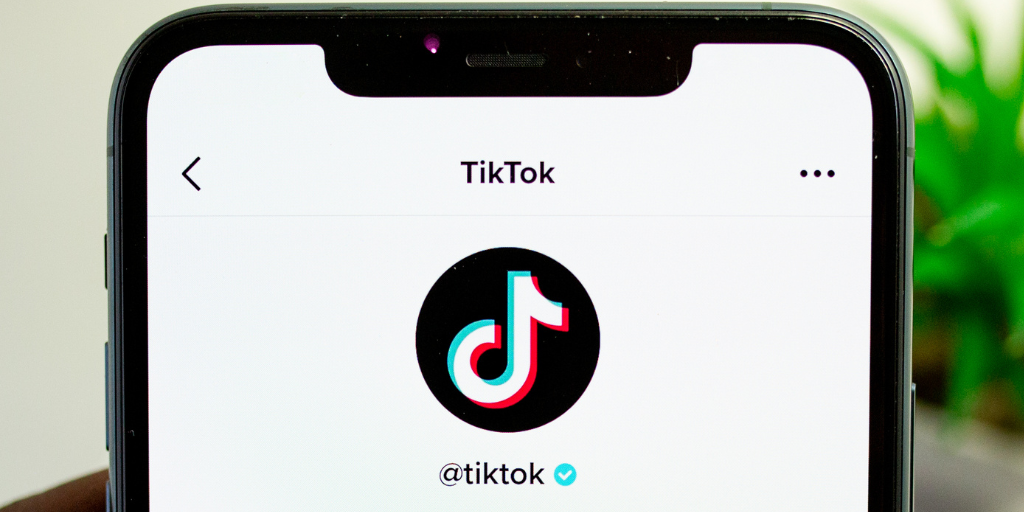
If your child is curious about joining social media, TikTok is likely top of their list. The video sharing app has skyrocketed in popularity in recent years, and is now the second most-used online platform among teens.
In this guide, we’ll explore what TikTok is and how it works, the different ways to interact on the app, and how safe it is for kids. We'll also discuss parental controls on the app and how to make your child's account private, manage their screen time, and monitor their activity.
TikTok offers several ways for users to interact with content on the platform. The main functions that your child will use most are the “For You” page, the Feed, and TikTok Live.
The "For You" page (FYP) is the app's algorithm-driven feed, displaying videos that TikTok thinks the user will enjoy based on their previous interactions on the app.
The upside of an interest-based FYP is that it will show your child more of the videos he or she is interested in. The downside is, negative emotions count as interest, too. The app’s algorithm doesn’t distinguish between users "watching and laughing" or "watching intently with fear."
The Feed is a chronological list of videos from accounts the user follows, allowing them to keep up with content from creators they enjoy. This is as close to a curated list as you can get.
Lastly, TikTok Live enables users to stream video content in real-time, allowing for live interaction with viewers through comments, gifts, and challenges.
While TikTok can be a fun and creative platform, parents may have concerns about how safe it is for kids. The minimum age for using TikTok is 13 years old. However, keep in mind that some content on the platform may not be suitable for younger children, including videos that use explicit language or have sexual overtones.
As with any social media app, it's up to parents to decide whether TikTok is appropriate for their child and to monitor their activity on the platform to ensure they are using it safely and responsibly.
Prefer to watch instead? Check out our video below, or keep scrolling to read the rest of the article!
TikTok offers a range of parental control features such as screen time management, restricted mode, and limiting who can comment on and message their child's account. Check out our article on How to Use TikTok Family Pairing to learn more.
To make your child's TikTok account private:
There are two ways to manage screen time on TikTok. First, you can use the built-in parental control features on your child's device, such as Screen Time on iOS, to set app usage limits for TikTok.
Second, the TikTok app offers a Screen Time Management feature that allows you to set daily time limits for your child's account. To use this feature, go to your child's profile page, tap on the three dots in the top right corner, select "Digital Wellbeing," and set a daily time limit for their account. Setting these controls can help your child develop healthy screen habits early.
Parents can monitor their kids' activity on TikTok using various tools. One option is to use TikTok's Family Pairing feature, which allows parents to link their TikTok account to their child's account, view their activity history, set screen time limits, and control who can send them messages and comment on their videos. Another option is to use a third-party monitoring app like BrightCanary that flags concerning content on TikTok and other social media platforms and alerts parents when their child has been exposed to anything harmful.
TikTok can be a fun and engaging platform for kids, but parents should be aware of its potential risks and take steps to ensure their child's safety and well-being. By using parental controls, monitoring their child's activity, and fostering open communication, parents can help their child enjoy TikTok responsibly and develop healthy screen habits.
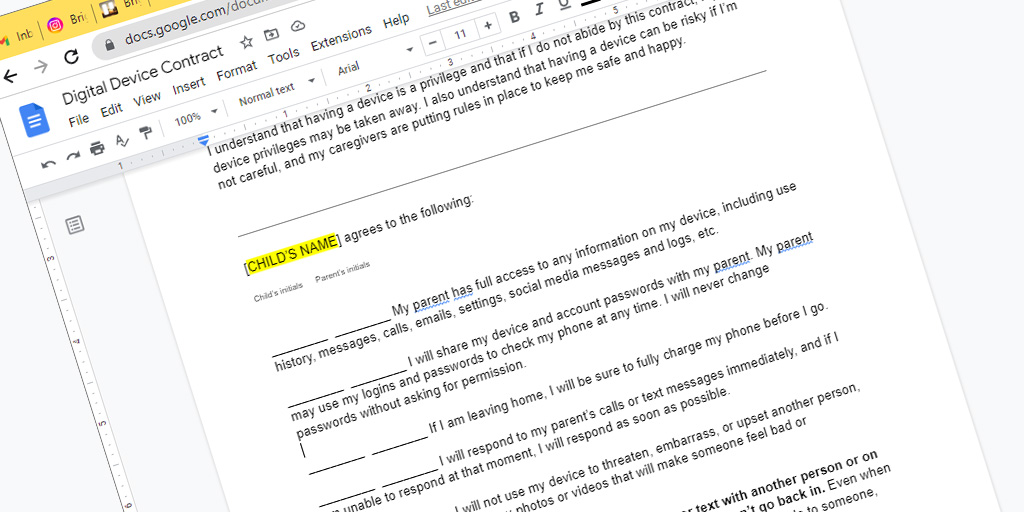
As the digital world continues to become more integrated into our lives, it’s important for parents and guardians to set clear boundaries with children about their device use. By implementing a digital device contract, you can help ensure that your kids are using technology safely and responsibly. Setting expectations as a family will help kids develop healthy habits around technology usage, while also providing an opportunity for open dialogue about what kids encounter online.
You can create your own from scratch, or use a customizable one — like our free Digital Device Contract Template.
When customizing the contract for your family, it’s important to provide clear guidelines on how devices should be used. Some of these guidelines may include:
It’s also important to discuss what types of content are appropriate for them to view or share online across videos, images and text messages.
In addition to laying out specific rules regarding device usage, a digital device contract should also include consequences if those rules are not followed. For example, if your child goes over the agreed-upon time limit, then there could be restrictions placed on their access for the remainder of the day or week. You may also want to consider rewarding your child for following the rules, such as providing extra time if they have been particularly responsible in their device use.
The ideal moment to first introduce a digital device contract is when your child first gets his or her own phone or tablet. By putting together this document ahead of time, you can ensure that you both understand what is expected from the start. This will help avoid any confusion down the line and make sure that everyone knows exactly where they stand regarding usage rules and expectations.
Another good time to introduce or update your existing digital device contract is when your family’s circumstances change (e.g., moving house, starting at a new school). This gives you an opportunity to review how things are going so far and make any necessary adjustments. It’s also a good way to reiterate the importance of responsible online behavior and make sure your child is following the rules.
Finally, any time that your child expresses a desire to explore new technologies — whether it’s social media, video streaming services, or something else — it can be useful to have a digital device contract in place to help them understand the consequences of their actions. This can also be a great time to sit down and have an open conversation about the potential dangers of these new technologies and how they should be used safely.
Parents often make the mistake of thinking that talking to their kids about digital device contracts is a one-time conversation. But this type of dialogue should be an ongoing process throughout your child’s development as they learn how to safely and responsibly use technology. It's important for parents to stay informed on the latest trends in online safety, such as popular phishing scams or major password breaches. That way, you can discuss these topics with your children in an age-appropriate manner.
It’s important for both parties to understand exactly what is expected from them, so that everyone knows where they stand if any issues arise later on down the line. Be sure to explain each rule clearly and provide examples if necessary. Give your child space to ask questions while you review the contract.
Kids need to know that there are real repercussions for not following through with the terms of the agreement; otherwise, why bother making one at all? Make sure you outline clear consequences ahead of time and enforce them consistently when needed.
It's important to remember that you, as the parent, have a responsibility as well. Make sure you set realistic expectations for yourself: be diligent about monitoring your child’s online activity and checking in from time to time to make sure they are abiding by the contract. If there are any issues, be sure to address them immediately and take corrective action if needed.
You also have the opportunity to lead by example; if your child agrees not to use their phone during meals, you should stay off your phone, too.
Lastly, don't forget to revisit the digital use contract periodically with your child as they grow and learn. As technology advances, so too will the risks associated with it; being aware of these changes can help you keep your child safe online.
By following these tips, you can help ensure that your conversation about digital device contracts goes smoothly and that everyone understands the expectations set out in the agreement. To get started customizing your own contract, download this free template.
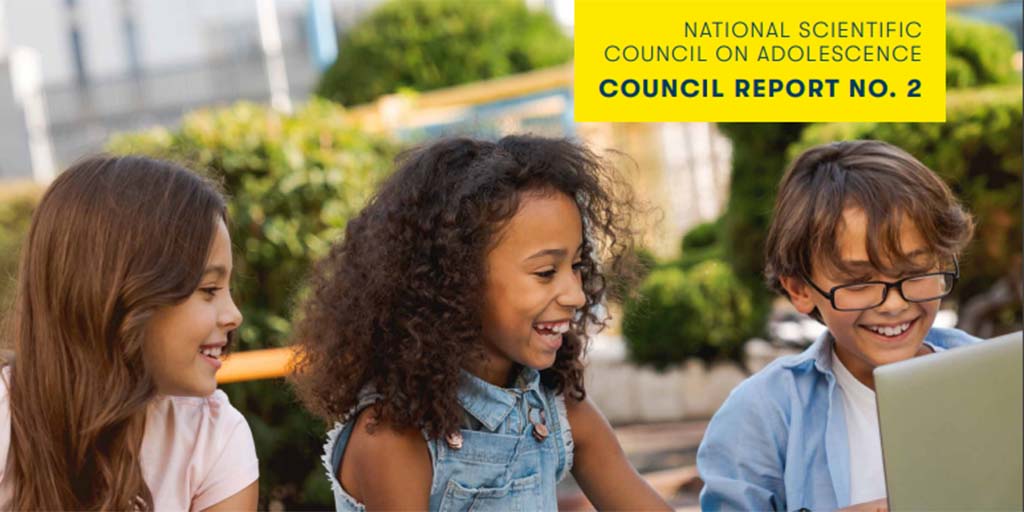
How do we promote positive development and decrease the risks of social media for tweens? According to a new report, it starts with reevaluating the way we think about digital technology.
The National Scientific Council on Adolescence, part of the UCLA Center for the Developing Adolescent, recently released a new report titled “Engaging, Safe, and Evidence-Based: What Science Tells Us About How to Promote Positive Development and Decrease Risk in Online Spaces for Early Adolescents.”
The report is focused on recommendations related to social media use by early adolescents, defined as ages 10-13. It's a lengthy read at 32 pages, but we’ve distilled the major takeaways for you here.
Early adolescence is the perfect storm of expanding independence, high curiosity, low emotional regulation, and particular susceptibility to social influence.
The report's authors note that young adolescents are going through a major learning period. During that period, they begin figuring out complex social situations, testing adult limits, and questioning their identities.
“As they go through these changes, young adolescents are especially sensitive to external social and emotional influences, and compared to older adolescents, they are not as able to regulate their responses to these influences.”
Social media companies aren’t considering this age group when they build their platforms and features, because technically they shouldn’t be using their platforms.
The minimum age for all users is 13 for most social media platforms. However, social media use increases dramatically during early adolescence: 38% of 8- to 12-year-olds use social media.
It’s both — and whether it’s more bad than good (or vice versa) for your child depends on a variety of factors.
According to the report, social media’s opportunity for good includes:
Opportunities for harm include:
The UCLA researchers offer several specific recommendations, grouped into four categories.
Digital technology should scaffold healthy development and promote wellness.
Digital technology used by young adolescents should incorporate and advance the best available research as part of its design and evaluation process.
Digital technology used by young adolescents should incorporate and advance the best available research as part of its design and evaluation process.
All young adolescents should have reliable access to the level of digital connectivity and devices required to fully participate in their education and learning.
The report goes into great detail about each of these four recommendations, and you can also watch a panel discussion on the report on YouTube to learn more.
This report highlights the fact that any progress in this direction requires tech platforms to either prevent tweens from using their products, or acknowledge they’re part of their user base and make design, data collection, and targeting decisions with their best interests in mind. In the meantime, it's essential for parents to stay informed about what their kids encounter online. BrightCanary is a social media monitoring app that shows you what your child encounters on Instagram, TikTok, Google, and YouTube, as well as text messages on Apple devices.
Tech platforms have a long way to go before they’re appropriate, let alone empowering, for tweens. But parents need accessible tools and settings that help them keep their children safe online sooner, rather than later.

YouTube is a treasure trove of video content for kids. Whether they’re watching Peppa Pig, learning magic tricks, or doing kid yoga, the video sharing site has something for every child, no matter their age.
However, like any online platform, YouTube also poses safety risks to your child. In this guide, we'll explore some safety concerns kids may face on YouTube and offer tips for managing your child's YouTube experience to ensure they stay safe and happy online.
YouTube makes it easy for children to watch one clip after the next, increasing the chances that your child may accidentally stumble upon inappropriate videos, including violent or sexual content, profanity, or hate speech.
The comment section on YouTube can also pose a danger to kids — it is often unmoderated and can be a breeding ground for cyberbullying and other harmful content. That’s why it's crucial to monitor your child's YouTube activity and teach them how to report and block users who engage in inappropriate behavior.
Unfortunately, harassment and cyberbullying are common on YouTube, and kids may become targets of online abuse. As a parent, it's important to be aware of the signs of harassment and to teach your child how to recognize and report this behavior. You also want to monitor your child's activity on the platform and to have open and honest conversations with them about online safety and responsible behavior.
Finally, letting your child post videos on YouTube also carries risks, including potentially exposing them to online predators.
For more info, check out our article on How to Talk to Your Children About Sharing Personal Information Online.
The good news is, there are several ways to manage your child's YouTube experience to make it a safe and enjoyable online space.
YouTube can be a wonderful way for your child to explore their interests and learn new things. But as with any online space, the platform carries safety risks. Fortunately, with a bit of planning, you can keep your child safe while allowing them to take advantage of all the site has to offer.

The day your child gets their first phone is almost as exciting as when they get their first car. It’s a big step toward their independence and a chance to show you they can be trusted. A phone is also a great way for you to ensure your kids are safe and to know where they are at all times.
However, getting your child a phone also carries risks, and you want to make sure you put rules and guidelines in place to help them navigate their new device. Let your child know that owning a phone is a privilege, and as long as they follow the rules, a phone can be a wonderful tool for connection.
So what’s the best way to handle your child’s first phone? Here are five tips to get you started.
Choose a device that allows you some control, but that gives your child some leeway, too. For instance, phones that are made for children with restrictions already in place can be too limiting for both child and parent. Standard phones already have plenty of options for parental controls that give kids and parents some freedom.
It’s best to choose a device that links with what your family already uses. For example, if you use an iPhone, it makes sense for your child to use an iPhone as well. That way, you can use the same cloud, have access to Find my iPhone, use Family Sharing, and have more control over your child’s phone than if it were outside your network.
Having phones on different networks makes it more challenging to track, manage, and keep your child safe.
Most phones have built-in parental controls, and it’s a good idea to use them. Activate features like screen time, “Ask to Buy,” restricted websites, and app limits. The more parental controls you put on the phone, the less you need to worry when your child uses their phone without you nearby.
Other tips include setting passwords for in-app purchases and clicking “don’t allow” in the parental controls so kids can’t download, delete, or change apps and information on the phone without your permission.
Another option is to use a child safety tool like BrightCanary, which monitors your child’s social media use and alerts you when your child is exposed to harmful content.
You want your kids to have a sense of freedom as they grow up, while also making sure they aren’t being exposed to more than they can handle for their age and maturity level. From the start, establish rules and boundaries with the phone.
For instance, put a basket on your kitchen countertop and set a time that the phone must be in the basket at night. This ensures your child doesn’t take their phone to bed and scroll through their phone instead of sleeping.
Other boundaries include using a password that both parents know and that kids won’t change. You can also set rules, such as requiring that your child respond to your text or calls as soon as possible — or you will take the phone away. Put these rules in a digital device contract and have them sign it.
Let them know from the beginning that you’ll check in on their phone activity. Don’t have a set day and time that you do this, though. Instead, do random checks of your child’s phone. This will ensure you see the true phone activity, rather than the cleaned-up version you get when they know you’re going to check it.
Make it clear that you’ll read text messages, check browsing history, and go through their apps. Reassure them this is all for their safety, not because you’re nosy or want to spy on them.
Let your child know that you will choose apps together. This doesn’t mean your child can’t ask you for a new app, but you’ll review the app together and decide if it is age-appropriate. A good resource is Common Sense Media, but you can also read the app’s description and reviews and talk to other parents about which apps they think are safe for kids.
It’s a good idea to go through any new app’s settings as soon as you download it to enable any parental controls.
Giving your child their first phone can be scary, but it’s a step toward independence and maturity. Plus, it gives you another way to keep tabs on your child in today’s complex world. Establishing rules from the start and following through on them is key.
Don’t let your child have free reign with the phone at first and then try to restrict them. Instead, set the rules from the start and even consider having them sign a phone contract so you are both on the same page. That way, you ensure your child uses the phone according to your guidelines and understands the consequences if they don’t.
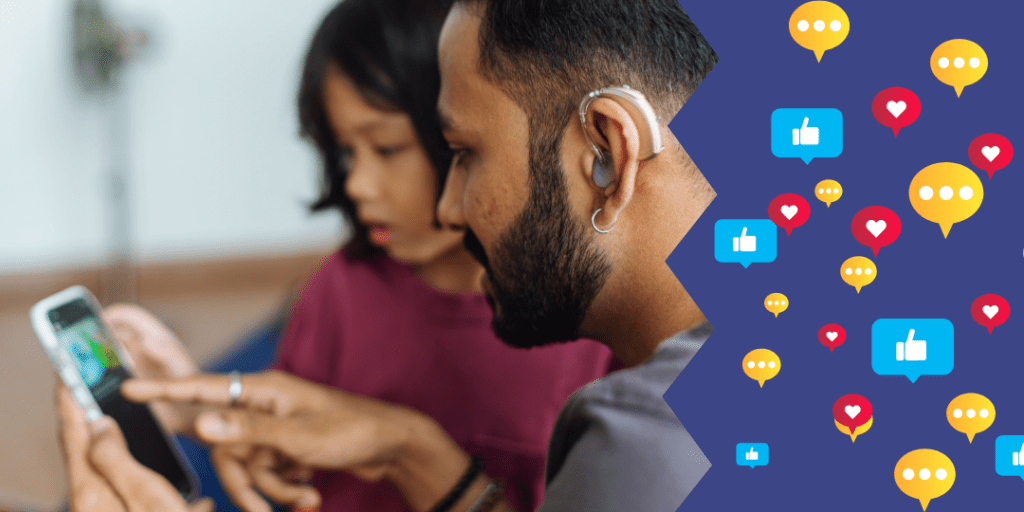
You might struggle with the idea of being "one of those parents." You don't want to think of yourself as constantly helicoptering over your kids, getting involved in every little thing they do. But should you monitor social media accounts? You want to help your kids grow into confident, independent adults, and you worry that virtually hovering over their online activities is just as bad as doing so in the real world.
You might also think of device monitoring as invading your child’s private spaces. Would you regularly go through desk drawers, closets, or backpacks without some reason to do so? If not, why should you monitor their online activities? Here’s why you want to keep a close eye on your child’s social media activity, and the best way to do it.
For some of us, walking into a library as kids meant the beginning of a great story adventure. Online platforms are taking that place for our kids. Every family needs to decide for themselves when their child is ready to access online content, and for how much time every day or week. But once you decide to let them out on the internet, you need to help them learn how to navigate what's out there.
If your child walks to school alone by themselves, they don't simply leave the house the first morning and figure it out on their own. You probably walked with them several times to make sure they understood the route, offered caution around any big dangers (busy intersections with long stoplights), and all the things they might encounter on the way. You acted as "training wheels" for your child as they learned to do this independently.
Monitoring their internet use is similar. As your child takes their first steps as an internet user, you as a parent can and should come along.
It can be daunting as a parent to figure out how best to monitor all of your child’s social media accounts. That’s where monitoring tools can help.
Using a tool to monitor their activities on the biggest social media platforms like Instagram and TikTok is just like walking with them to school as they learn to be more independent. Monitoring tools like BrightCanary make it easy for you to have a single dashboard to keep track of your child’s online activity. These child safety apps also alert you when your child might have been exposed to any concerning content.
Some parental control apps slow down your child's device and shorten battery life, so keep that in mind when choosing which monitoring tool to use.
It’s best to start monitoring your child’s online activity early, when they’re just starting to get familiar with social media.
If you're the parent of a 15-year-old, it may be much more difficult for them to understand why you want to start monitoring them. With younger children, introducing these kinds of "training wheels" is a great way to show that you trust them but that you're also there to help with anything they need. You're teaching them that there's nothing to be afraid of since their parents will be there for them as they grow up.
Still, it's never too late to offer guidance, so don't shy away because you think your child is too old for monitoring. This is an opportunity for you and your teen to have a conversation and arrive at an arrangement that works for both of you.
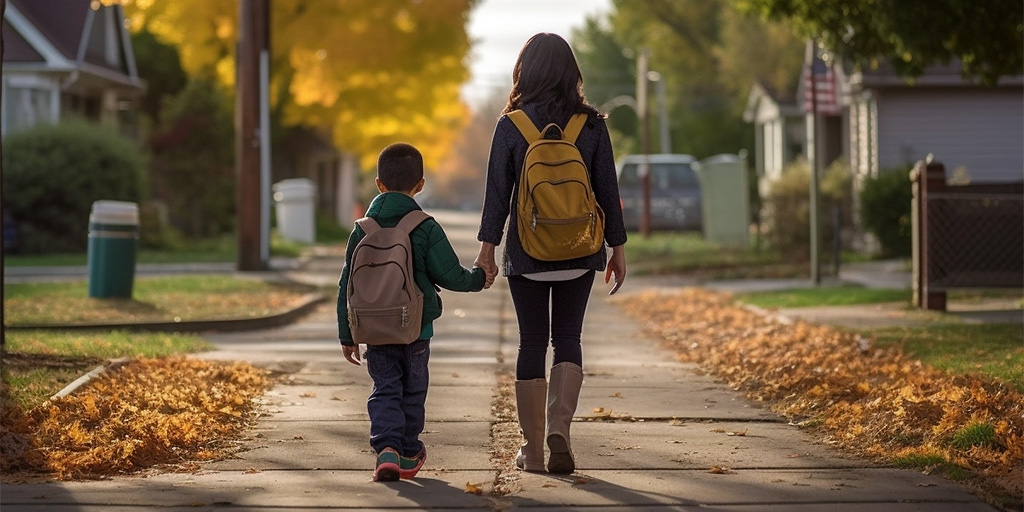
Monitoring your child's activities on the biggest internet platforms is just like walking with them to school before letting them walk by themselves. Fortunately, monitoring tools make it easier to help you guide your child as they learn to navigate the online world.
Should you be monitoring your child's online activities?
Yes, parents should be keeping a close eye on their child’s social media activity to protect them from any harmful content and guide them on how to navigate the internet.
What is the best way to monitor your child’s social media accounts?
As a parent, it can be daunting figuring out the best way to monitor all of your child’s online activity. That’s why a monitoring tool is a good idea. Tools like BrightCanary allow you to track your child’s online activity using a single dashboard, and send you alerts when they may have been exposed to harmful content.
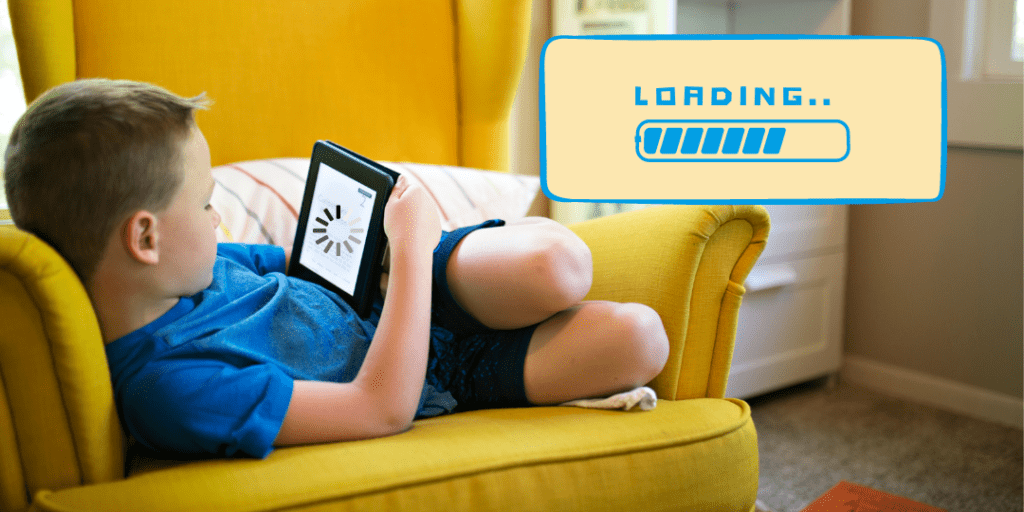
You’re trying to be a good parent, and you want to stop your kid from using their phone at all hours of the day and night. You want to limit how much time they spend on TikTok, and you definitely don’t want them to find their way onto “those” websites. So, you installed an app to have some control over their online experience — but now, their phone isn't working the way it should. You might be wondering, "Why did my parental control app slow down my child's phone and drain their battery?"
Traditional parental control apps like Circle, Bark, Qustodio, MMGuardian, and others seem appealing. Because they don’t come from the operating system maker (Apple, Google, or Microsoft), they have to rely on different ways to make their monitoring technology work. They found an effective workaround: these products are all built around Virtual Private Network (VPN) technology.
VPN stands for “virtual private network.” A VPN redirects your online activity through a remote server run by a VPN host.
Think of VPNs as a special “pipe” to the Internet from your phone or computer. Instead of sending your requests for netflix.com directly to your home internet provider, having a VPN forces all your connections to go through their software first. In the case of parental control apps installed on your child’s phone, they make all of your child’s browsing and app activity go through their software.
You might have heard of VPNs as something your company uses to let you connect to their servers and software when you’re not in the office. More recently, you might be hearing about them as a way to be secure when using the internet when traveling, or to get access to things like BBC videos, normally only available in the UK, when you’re home in the US.
VPN-based apps can tally the access each time your child uses a specific app, such as Instagram. They can also stop your child from connecting to Instagram if they have exceeded the limit you set, or if it’s after bedtime.
Why would a VPN-based parental control app cause my child’s device to work less efficiently?
The problem is that the app is frequently in communication with your child’s device, and that uses up the device’s battery. VNPs require CPU power to keep track of activity, and it necessarily slows down the network because every request is evaluated to make sure it’s allowed.
This means longer times to load a web page, start an app, message a friend — all of which just makes the device more frustrating.
With iOS devices, it is very straightforward for a savvy kid to disable the VPN installed by the parental control app. If you read the parental reviews on the iOS App Store for these products, you will see many references to “it was easy for my kid to figure out how to disable this.” It’s not really the fault of the parental control software makers — there’s no other way to integrate their product with the operating system.
Apple, Google, and Microsoft all offer relatively robust parental control features for free with their operating systems: Apple Screen Time, Google Family Link, and Microsoft Family Safety. We recommend parents first try these if you need to set parental controls, like screen time limits and blocking access to certain apps.
BrightCanary is different than other parental monitoring apps because it doesn't use a VPN. The app works entirely from your phone, so your child can't delete it. You can use BrightCanary to monitor your child’s online activity and texts on Apple devices, and it will send you alerts when your child interacts with potentially concerning content. All you need to activate it is install it on your own phone and link their accounts.
Parental control apps are built on VPN technology, which can use up a device’s battery and make the internet run more slowly. Device manufacturers (Apple, Google, and Microsoft) all have parental control features built into their operating systems. For more visibility into what your child encounters online, BrightCanary fills in the gaps on Apple devices — and it doesn't use a VPN, so it won't slow down your child's phone.
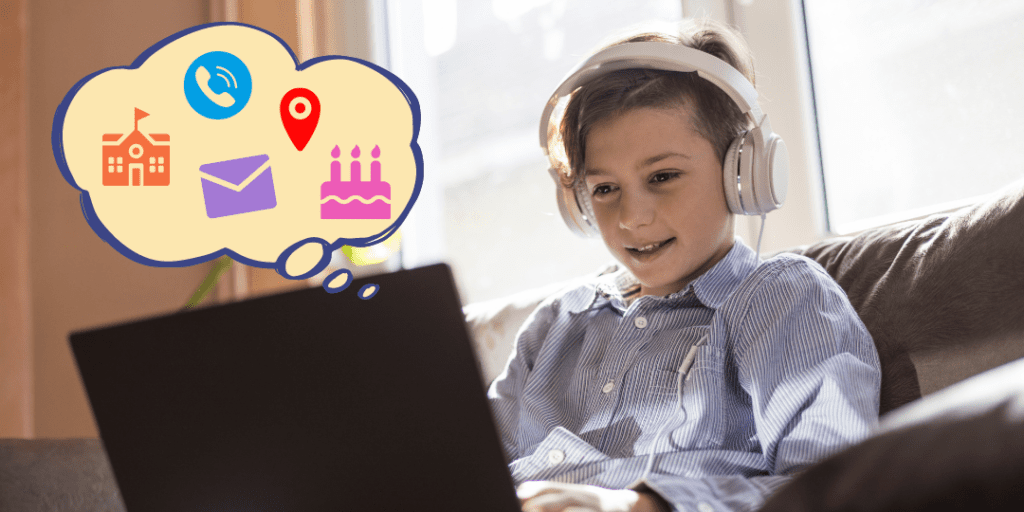
As parents, it's crucial we educate our children about the dangers of sharing personal information online. Kids are spending more and more time online, making it more important than ever to teach them about online safety and data privacy. In this article, we’ll discuss what counts as personal information, why it's vital to keep that information private online, and what to do if your child accidentally shares personal data. We'll also provide discussion starters for talking to your kids about the importance of online privacy.
“Personal information” can mean many different things, especially to your kids, who may have never before come across the topic. The list below is a summary of different types of personal information that your child should know is private and sensitive. Take the time to go through this list item by item to ensure your child understands each one well:
Keep in mind that personal information doesn’t only include text-based information. It can also include pictures or videos that reveal personal information, such as school uniforms, street signs, or house numbers.
Even seemingly innocent information, like the name of your child's school or their city of residence, can be used to piece together a picture of their life and whereabouts. Knowing how to protect personal information online can prevent identity theft and other data breaches.
Children between the ages of 8 and 14 are still developing their understanding of the digital world and need to be made aware of the risks of sharing personal information online. Personal information, such as your name, address, phone number, or birthdate, can be used to steal your identity or commit fraud. Sharing this information on the internet can also make it easier for strangers to find and contact your child, which can put them at risk.
Additionally, posting certain information or pictures online can have long-term consequences. For instance, a future employer may search for your child online during the hiring process. If there are pictures on the internet of them at a raucous party, for example, it may jeopardize their job possibilities. By keeping personal information private, your child can protect themselves and their future.
If your child accidentally shares personal information online, it's essential to address the situation quickly. Encourage your child to delete the post or message and to change any usernames and passwords they may have shared.
Gently remind your child that it's important to think before sharing anything. Additionally, remind your child that even if they delete a post, it doesn't mean the information is gone forever. People can take screenshots or share the information. Make sure your child understands this point: Once something is posted online, it's there forever.
The good news is there are tangible steps your child can take to protect their personal information online. Here are some tips for parents to help their child practice online safety:
It's also a good idea to chat with your child about what they're sharing online. Ask them to show you their social media accounts and explain what they're posting and why. This can be a great opportunity to teach them about the importance of privacy and identify potential issues with their online behavior.
It isn’t always easy broaching topics of safety, both in the real world and online, with your child. Here is a list of questions and discussion starters about how to behave online and the importance of not sharing sensitive information:
By starting these conversations with your child, you can help them understand how to protect personal information online and equip them with the knowledge and skills they need to stay safe. Remember, the most crucial part of protecting personal information is knowing what is being shared, and with whom. With these tips and discussion starters, you can help your child navigate the digital world safely and responsibly.
Another day, another news article about Harry and Meghan, the British prince and his American actress wife who famously stepped back from their royal duties to start afresh in California.

In their Netflix docu-series Harry & Meghan, the pair claim racist attacks by the British press are what drove them away from royal life. In a widely-televised interview with Oprah, Meghan alleged a senior royal made comments about her unborn child's skin color. She said she had also asked for mental health support, and the royal establishment refused.
If your children are on social media, there’s a good chance they’ve seen something about Harry and Meghan. Here are some topics that might come up, and how to approach them.
The couple’s six-part docuseries, released in December, became the biggest documentary debut ever for Netflix. In January, Harry published Spare, his blockbuster memoir about growing up as a royal and the trajectory of his and Meghan’s relationship.
Harry and Meghan’s revelations about her treatment by the press and the royal family raises a number of issues, including the challenges of being in such a high-profile relationship and the difficulties of confronting racism within a historical institution. It also touches on the need for better mental health awareness.
🤝 Instantly understand what your kids are seeing on Google, YouTube, TikTok, and social media: Start your free week!
Your child has likely heard talk about Harry and Meghan on social media, and they may have questions around issues such as mental health, racism, and media bias. Here are ways to broach these topics with your child.
Whether or not you are on “Team Harry and Meghan,” the couple’s struggles in the public eye are a great conversation starter about important topics affecting kids today.

Getting a young child their first phone is a big decision. And naturally, parents will have a lot of questions—is it too soon? Do they need it? Are they responsible enough? Is it safe at this age? What age should a child get a phone?
There are a lot of benefits to your child having a phone. They can reach you when they’re at a friend’s house, they can call you if practice ends early, and they can call grandma directly to tell her that mom still hasn’t figured out how to make her cinnamon rolls.
Then on the other hand, you get so many warnings and dangers that you might think you’re harming your child if you give them a phone too soon. So, what’s the right age?
Are you hurting your child by giving them a phone early? The research is mixed. According to a study conducted by Stanford Medicine, there isn’t a correlation between when kids get their phones and their overall well-being. The study also found that the average age children get a phone is 11.6 years old, and the average age range is 10.7 to 12.5 years old.
But a recent global study found the opposite.
So while studies are still being conducted, your decision will depend on your child and your family’s beliefs.
You probably wonder why a young child would need a phone. It's more common to hear about the negatives, so you might be surprised at how many scenarios there are when a phone makes sense:
Of course, giving a child a phone has pros and cons. First, let’s start with the good:
Understanding the downsides of giving a child a phone is important too. They include:
No two children are the same, but here are some signs your child is ready for a phone:
If your child exhibits any of the following signs, they may not be ready:
There’s no right or wrong age to get your child a phone. It depends on your child’s maturity level, ability to handle such an investment and your child’s activities that might warrant getting a phone much sooner than others. Don’t base your decision on what other families do, but on what you and your family value and need for peace of mind.